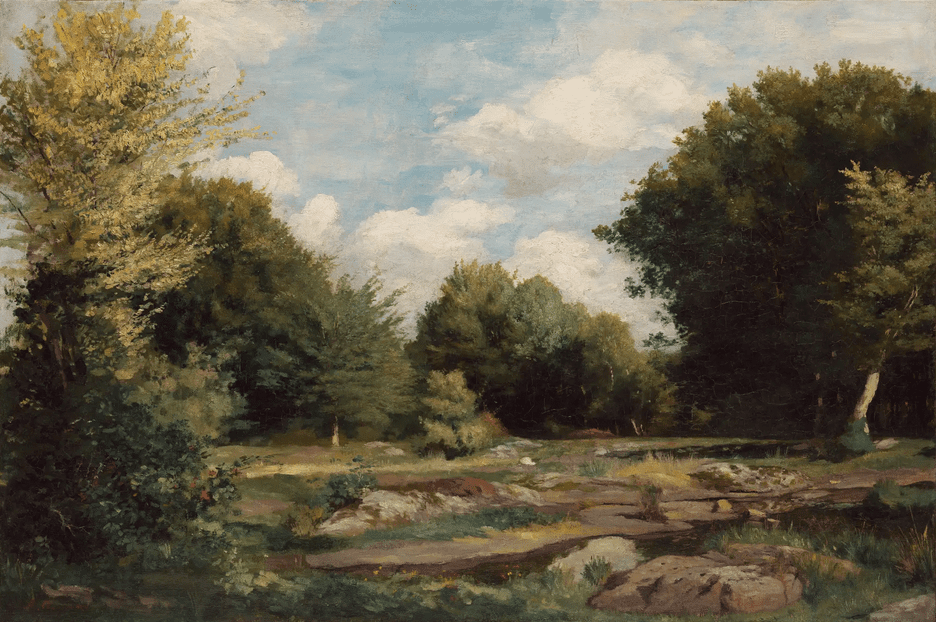 |
| Clearing in the Woods. Pierre-Auguste Renoir, 1865, oil on canvas. Detroit Institute of Arts. |
Renowned for his colorful portraits and landscapes, Auguste Renoir (1841–1919) was one of the greatest French Impressionists. He painted some 4,000 compositions, many still admired all over the world. But during his last twenty years, he suffered from a debilitating illness that greatly impacted his work.
As a child, Renoir contracted pneumonia, which left him susceptible to respiratory infections. He suffered from chronic bronchitis and was prone to coughing frequently, often short of breath, sometimes having to take to his bed.
At age fifty-three he developed rheumatoid arthritis. Treated with the painkiller antipyrine, he at first relied much on exercise, walking, juggling, playing billiards, and visiting Vichy and other spas. At one time his family physician was the Dr. Gachet who also treated Van Gogh and was painted by him. After some ten years, Renoir’s disease became more severe, affecting his hands, shoulders, spine, and legs. For his last seven years he was severely handicapped. He had painful nodules on his back that had to be excised. He could no longer wear shoes, his knees were permanently flexed, and he became wheelchair-bound. He lost weight and developed bedsores, gangrene of his foot, and pneumonia. He died in 1919.
Renoir’s painful joints greatly affected his work. Finding it difficult to hold a paintbrush, he had to change his style and technique. He used larger brushes and painted on canvases fixed to a rotating easel so he could paint with only small movements of his hands. His assistants had to mix his paints and prepare his canvases. Yet he produced some of his most famous works during this time, strikingly beautiful landscapes and young girls with rosy cheeks and floral dresses. When already on his deathbed he painted a still life with the apples one of his sons had brought him. Painting was his whole life and he once remarked, “The pain passes, but the beauty remains.”
References
- Boonen A, van de Rest Jan, Dequeker J, van der Linden S. BMJ 1997;315:1704.
- Kowalski E, Chung KC. Impairment and disability: Renoir’s adaptive coping strategies against rheumatoid arthritis. Hand (NY) 2012; (4): 357.
- ChatGPT was consulted in the creation of this article.
GEORGE DUNEA, MD, Editor-in-Chief
Winter 2023 | Sections | Art Flashes

Leave a Reply